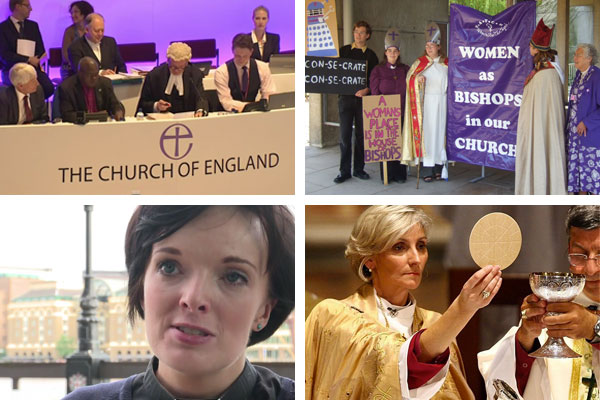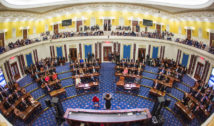
Church of England Votes to Allow Women Bishops
- By Krista R. Burdine --
- 15 Jul 2014 --

In an historic vote, the governing body of the Church of England voted Monday to allow women bishops within the church.
This decision raises the leadership ceiling above the current level which allows for female priests. “It’s one more step in accepting that women are really and truly equal in spiritual authority,” said Dean of Salisbury, the Very Reverend June Osborne, in response to the vote.
The Case for Gender Equality
After 40 years of campaigning for female equality in spiritual authority, including 20 that have passed since the last landmark of female priests, many in England are thrilled and relieved to finally push through this barrier. Women at this higher level of leadership will fundamentally change the church, both through the influence they bring and through the culture of acceptance they are now given.
The Most Reverend Justin Welby, Archbishop of Canterbury, advocated for this change on grounds that it gives women a needed invitation to ownership within the church. Yet he also emphasized that the legislation was formulated in such as way as to protect the traditionalists concerned about the watering down of their theology, with the goal of them still having a chance to “flourish” within the church, as opposed to facing persecution or marginalization over their strong stance against the change.
Not All Are Happy with Women Bishops
While the measure passed by the required two-thirds majority in each of the three bodies of the General Synod, with an overall 81% approval, this still leaves at least 20% of the bishops, clergy, and laity with serious objections. Jane Winchester, a lay member of the Synod, voiced concern that Jesus had not set the example of women in his original group of apostles, and that women in positions of leadership over men is so against what Jesus taught that this new policy has potential to cause a split within the church.
Archbishop Welby understands the reservations of those who remained opposed to this policy change, and reassured them during Monday’s debate that the ultimate goal of the church is to embrace both tradition and change with the love of Christ. Traditionalists are not now rejected from the inner workings of the Church simply because women have been granted a new level of equality.
“It will be hard work, progress will be all but impossible to achieve without a fresh embrace of one another in love,” he said.
Historical Significance
Monday’s vote is an important step, which clears the way for Parliament to approve the motion for female bishops. It could then in turn be formally implemented by the Synod, or leadership body of the church, when it convenes in November. Generally, while Parliament has been pushing the state-run Church for some time to grant female equality, the Synod reserves the ability to present changes to policy while Parliament simply approves or rejects those changes without further comment.
As it turns out, the Church of England was up against a wall to pass this measure. Had they not been able to ratify the change after Monday’s debate, the institution was in danger of being forced to do so anyway. This could have happened through a complete dissolution of the Synod in order to replace it with leaders who would vote according to political expectation; or through the loss of certain freedoms enjoyed by the institution, such as the one mentioned above that allows the Church to designate policy changes on its own terms with veto ability the only true intervention imposed by Parliament.
The passing of this measure marks the end of a 20 year campaign, since women were granted the ability to become priests, to allow increasing leadership roles within the Church. The hope is that this change creates more unity within the Church than the predicted division, given that the even more challenging issue of sexuality follows closely behind. As that becomes an issue of greater focus and discussion, the Church needs to be healthy and whole, and able to present a united front that truly represents the intentions of the Almighty.
The Church of England has acknowledged the necessity for the expression of religion to fit within the context of its time, and with equality for women becoming a more constant norm, this change in policy allows about half of its constituents a greater opportunity to work out their faith in leadership roles.


















